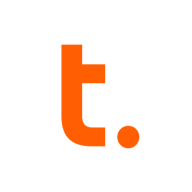

Teradata and IBM Cloud Pak for Data are leading enterprises in data management platforms. Teradata seems to have the edge in terms of performance and scalability, while IBM Cloud Pak for Data shines in integration capabilities and AI implementation.
Features: Teradata excels with its robust parallel processing, scalability, and adaptability for efficient workload management. It features auto-partitioning, indexing, and a "shared nothing" architecture for consistent performance. IBM Cloud Pak for Data stands out with its seamless data virtualization, use of IBM's Watson for AI, and machine learning capabilities for easy model development and deployment.
Room for Improvement: Teradata needs improved cost structures, better cloud integration, and enhanced handling of unstructured data. High licensing costs challenge scalability. IBM Cloud Pak for Data could improve integration with other cloud services, simplify deployment, and enhance phased-out native features. Its initial deployment process requires better streamlining.
Ease of Deployment and Customer Service: Teradata offers extensive on-premises and hybrid cloud options with redundancy and superior technical support, but its cloud features are less mature. IBM Cloud Pak for Data emphasizes cloud capabilities with strong hybrid cloud integration. Teradata's support is more responsive, while IBM faces customer satisfaction challenges due to implementation.
Pricing and ROI: Teradata is costly, suitable for larger enterprises, but users report significant ROI through performance improvements. IBM Cloud Pak for Data is also expensive, potentially unaffordable for smaller firms, yet competitive among large vendors, offering value through analytics and integration, though with substantial investment.


IBM Cloud Pak® for Data is a fully-integrated data and AI platform that modernizes how businesses collect, organize and analyze data to infuse AI throughout their organizations. Cloud-native by design, the platform unifies market-leading services spanning the entire analytics lifecycle. From data management, DataOps, governance, business analytics and automated AI, IBM Cloud Pak for Data helps eliminate the need for costly, and often competing, point solutions while providing the information architecture you need to implement AI successfully.
Building on the streamlined hybrid-cloud foundation of Red Hat® OpenShift®, IBM Cloud Pak for Data takes advantage of the underlying resource and infrastructure optimization and management. The solution fully supports multicloud environments such as Amazon Web Services (AWS), Azure, Google Cloud, IBM Cloud™ and private cloud deployments. Find out how IBM Cloud Pak for Data can lower your total cost of ownership and accelerate innovation.
Teradata is a scalable data analytics platform designed to meet enterprise demands for large-scale data management and processing, focusing on performance, scalability, and security for complex query executions.
As a leading data warehousing solution, Teradata integrates advanced analytics enabling organizations to derive insights from massive datasets. It supports high-volume data workloads with its architecture optimized for analytical queries. Users benefit from its robust scalability, allowing seamless expansion as data grows. Teradata's SQL engine is compatible with a wide range of data types, ensuring flexibility in data analysis. With advanced security measures, it protects sensitive data across various environments, providing peace of mind to users handling critical information.
What are the most important features of Teradata?Teradata is widely used in industries like finance, telecommunications, and healthcare, where data-driven decisions are critical. Companies leverage its robust analytics capabilities to enhance customer experiences, streamline operations, and ensure compliance with regulatory requirements. In these sectors, quick access to data insights can significantly impact competitive advantage.
We monitor all Data Integration reviews to prevent fraudulent reviews and keep review quality high. We do not post reviews by company employees or direct competitors. We validate each review for authenticity via cross-reference with LinkedIn, and personal follow-up with the reviewer when necessary.